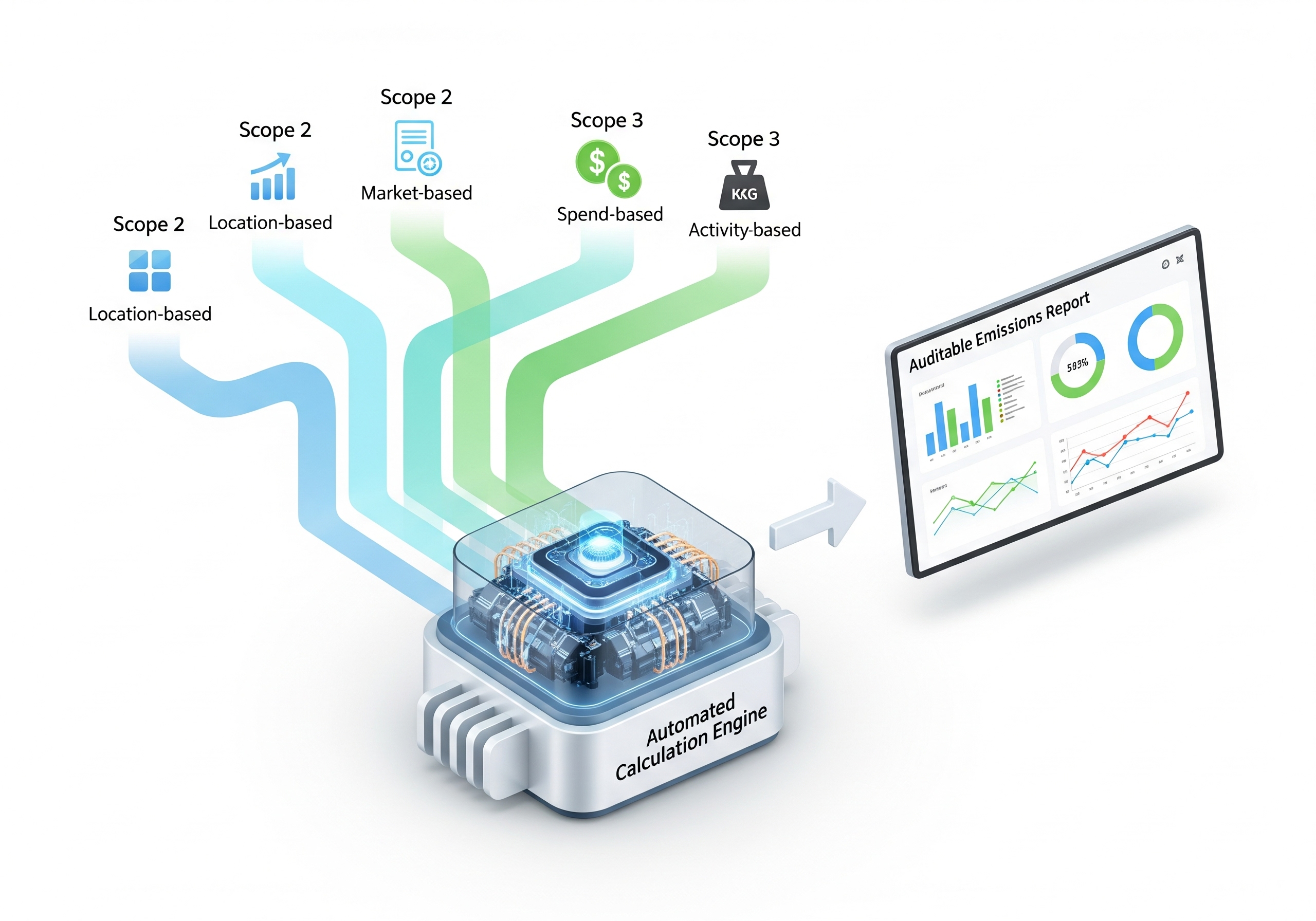ESG & Climate Tech
Beyond the Basics: How We Build a Calculation Engine for Scope 2 & 3 Emissions

Calculating your corporate carbon footprint is not just a reporting exercise; it's a complex data engineering challenge. While Scope 1 emissions are relatively straightforward, Scope 2 and the dreaded Scope 3 require a robust, logical, and auditable calculation engine. Simply multiplying numbers in a spreadsheet is a recipe for error and regulatory risk.
As technical ESG consultants, we don't just fill out templates. We architect and build the underlying systems that produce reliable emissions data. Here’s a look inside the "engine room" at how we approach the logic for Scope 2 and 3.
The Technical Nuances of Scope 2: Market vs. Location-Based
The GHG Protocol requires dual reporting for Scope 2 (purchased electricity, heat, and steam): the location-based method and the market-based method. Your calculation engine must handle both.
- Location-Based Logic: This is the simpler method. The engine ingests electricity consumption data (in kWh) for each facility and multiplies it by the average emissions factor for the regional grid it's on. The key is having an up-to-date, reliable database of grid factors (like eGRID).
- Market-Based Logic: This is more complex. The engine must be able to account for renewable energy contracts, such as Power Purchase Agreements (PPAs) and Renewable Energy Certificates (RECs). The logic must be able to identify which kWh are covered by a specific instrument and apply the corresponding (often zero) emissions factor, while applying residual mix factors to the rest.
Cracking the Code on Scope 3: A Focus on Purchased Goods & Services
Scope 3 is the final boss of carbon accounting. Let's focus on just one of its 15 categories: Category 1, Purchased Goods and Services. This often represents the largest part of a company's footprint. We build logic to handle two primary calculation methods:
Method 1: The Spend-Based Model. This is the most common starting point. The engine ingests procurement data directly from your ERP system. For each purchase category (e.g., "professional services," "office supplies"), it applies an environmentally-extended input-output (EEIO) emissions factor. The core of the engine is a massive, well-maintained database of these spend-based factors.
Method 2: The Activity-Based Model. This is the more accurate, advanced method. Instead of just using money spent, the engine calculates emissions based on the mass, volume, or number of units purchased. This requires more granular data (e.g., kilograms of steel purchased) and a different set of emission factors. A sophisticated engine can even use a hybrid approach, using activity-based data where available and falling back on spend-based data for the rest.
From Logic to Automation
The true power of a calculation engine comes from automation. We design these logical workflows to be implemented using tools like SQL databases, Python scripts, or advanced Power BI models. The goal is to create a system where new monthly data can be fed in, and an updated, fully-auditable carbon footprint is generated automatically. This frees up your team to focus on what really matters: reducing emissions, not just calculating them.
Accurate carbon accounting isn't about a number. It's about a system.
A reliable system provides the data you need to make strategic decarbonization decisions.
Let's build the engine that will power your climate strategy.